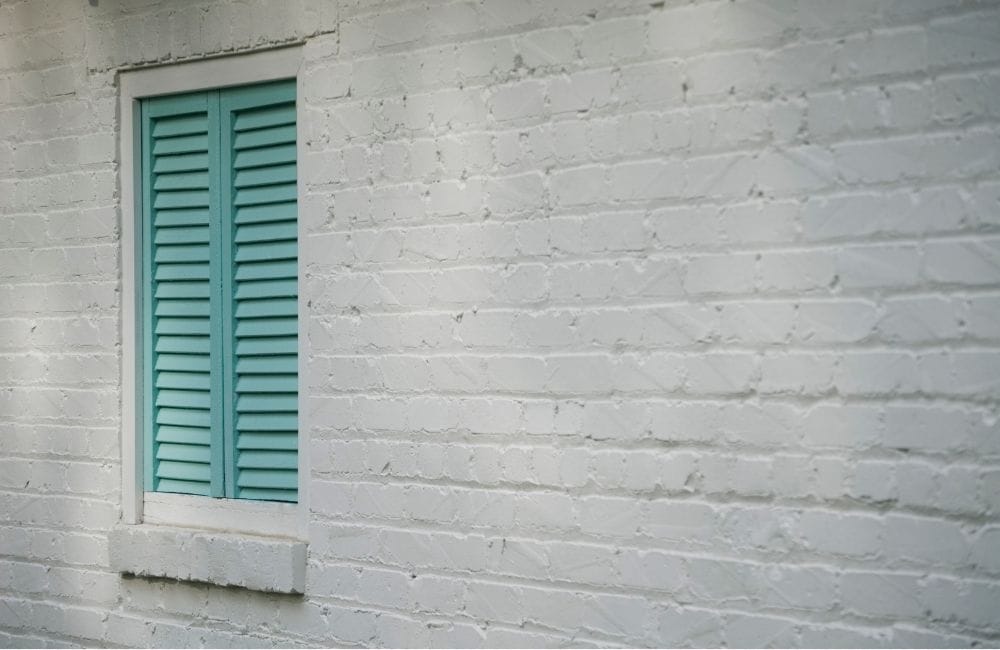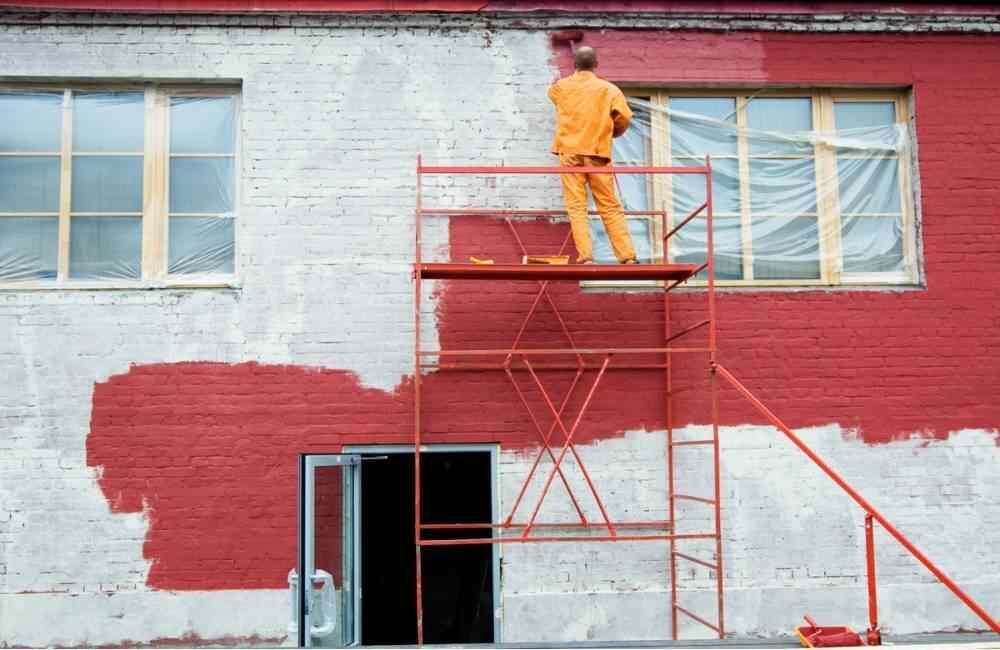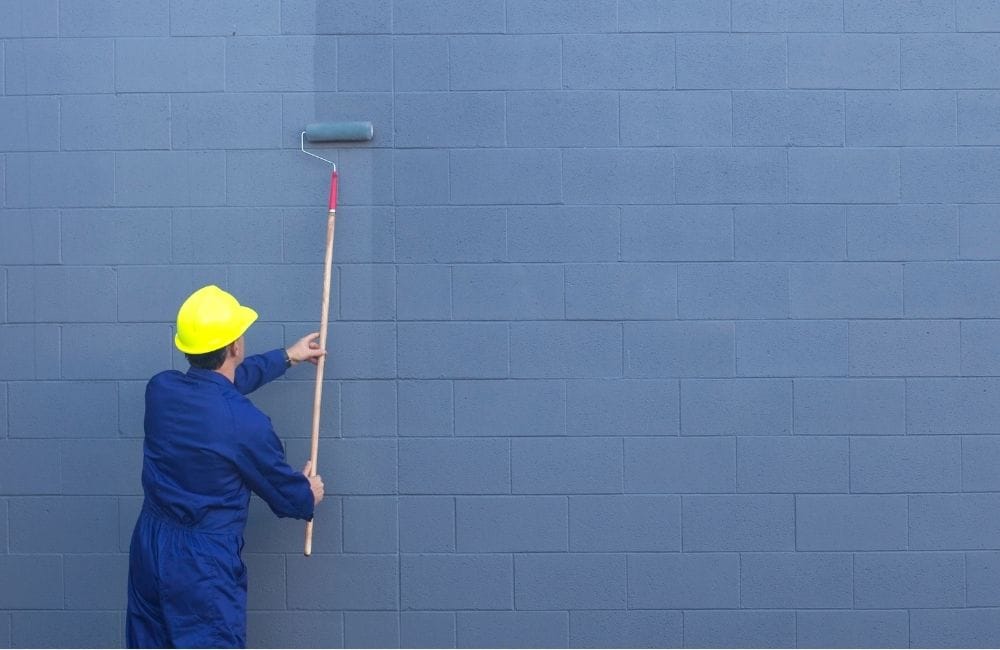- Free Estimates

Painting over brick can dramatically transform the appearance of a home, giving it a fresh, modern look while adding a layer of protection against the elements. However, it’s not as simple as applying a few coats of paint—brick is a porous material that requires proper preparation and the right products to ensure a long-lasting finish.
Done correctly, painted brick can enhance curb appeal, increase property value, and make maintenance easier, but mistakes can lead to moisture issues, peeling, and costly repairs.
Here are five essential things to consider before painting over brick to achieve a flawless, durable result.
✔ Assess the condition of the brick to ensure it’s structurally sound and suitable for painting.
✔ Choose masonry-specific paint and primer for long-lasting adhesion and protection.
✔ Clean and repair brick surfaces thoroughly before applying any paint or stain.
✔ Use professional techniques like spraying and thin coats for even coverage and durability.
✔ Stained brick requires less maintenance than painted brick but offers a more natural look.
✔ Removing old paint from brick should be done carefully using masonry-safe products and low-pressure rinsing.
✔ Professional local house painting contractors can recommend the best color and finish to match the home’s style and environment.
Not all brick surfaces are suitable for painting. Damaged or deteriorating brick can lead to poor paint adhesion and moisture problems, which could cause the paint to crack or peel. Professional local house painting contractors know how to evaluate brick surfaces to determine if painting is a good option.
Selecting the right paint and primer is crucial for long-lasting results on brick surfaces. Brick is porous and textured, which means the wrong type of paint or primer can lead to uneven coverage and poor adhesion. Experienced local house painting contractors understand which products work best for exterior brick and how to apply them for a professional finish.
Preparation is key to ensuring that paint adheres well and lasts for years. Brick surfaces can accumulate dirt, dust, and debris, which will prevent paint from sticking properly if not removed. Professional exterior home painting services follow a thorough cleaning and preparation process to create an ideal surface for painting.
Applying paint to brick requires specialized techniques to ensure an even, smooth finish that resists peeling and fading. Brick’s uneven surface and porous texture make it challenging to cover without the right approach. Professional exterior home painting services use advanced methods to create a clean and professional look.
Exposure to sun, rain, and temperature changes can cause painted brick to fade or deteriorate as UV rays break down the chemical bonds in paint if not properly maintained. Professional exterior home painting services often provide maintenance tips to extend the life of painted brick.
Choosing the right color for painted brick is more than just picking a shade that looks nice—it influences the home’s overall style, curb appeal, and long-term maintenance. Professional local house painting contractors can provide valuable insights into color choices that work well with brick’s natural texture and outdoor conditions.
The architectural style of the home should guide color selection. Traditional homes often look best with classic colors like white, cream, or soft gray, while modern homes can handle bolder choices like black, navy, or charcoal. Professional exterior home painting services can recommend colors that complement the home’s design and period details without clashing with the overall style.
Even though brick will be covered with paint, its natural undertones can still affect the final color. Warm-toned brick (with red or brown hues) tends to pair well with earthy shades, while cool-toned brick (with gray or blue hues) looks better with crisp whites, cool grays, and blues. Experienced local house painting contractors often test paint samples on a small section of brick to see how the undertones affect the final color.
Sunlight can significantly alter how a color appears once applied to brick. Dark shades may fade more quickly in direct sunlight, while lighter shades can appear washed out in full sun but may look richer in shaded areas. Professional residential exterior painting services understand how to adjust color selections based on the direction of sunlight and local weather patterns.
Painted brick should work in harmony with the existing exterior features, such as the roof, window trim, and siding. For example, a white-painted brick home with black trim creates a classic, high-contrast look, while earth-toned brick pairs well with natural wood accents. Skilled exterior home painting services can help choose colors that create a cohesive look rather than a mismatched appearance.
Lighter shades, while visually appealing, may show dirt and mildew more easily than darker tones. Darker shades, on the other hand, can fade over time due to UV exposure. Professional local house painting contractors often recommend mid-tone shades for brick because they strike a balance between hiding dirt and resisting fading.
Many neighborhoods have guidelines on exterior color schemes, particularly for historical or planned communities. A bold color may look stylish but could violate HOA regulations or clash with nearby homes. Professional residential exterior painting services can provide color swatches and recommendations that meet local guidelines while enhancing the home’s curb appeal.
When updating brick, homeowners often face the decision of whether to paint or stain the surface. While both options can enhance curb appeal and protect the brick, they create very different looks and require different maintenance. Professional local house painting contractors in Fairfield, CT, can assess the condition of the brick and recommend whether painting or staining will provide better long-term results.
Paint creates a solid, opaque layer that completely covers the natural texture and color of brick. Stain, on the other hand, penetrates the brick and enhances its natural texture while allowing the brick’s original color variations to show through. Professional exterior home painting services can explain how each option will affect the overall appearance and maintenance needs of the surface.
The condition of the brick often determines whether paint or stain is the better choice. If the brick is damaged, chipped, or uneven, paint can provide a more uniform look by covering imperfections. However, if the brick is in good condition with interesting natural texture, professional residential exterior painting contractors may recommend staining to preserve its original character.
Painted brick typically requires more maintenance over time since it forms a surface layer that can chip, peel, or fade. Stained brick, because the stain penetrates the material, tends to hold up better against weathering and requires less frequent touch-ups. Experienced local house painting contractors can advise on the long-term care involved with each option based on the local climate and exposure to the elements.
Paint provides a smooth, consistent finish that works well for modern and contemporary styles. Stain creates a more natural, textured look that preserves the brick’s unique character, which suits rustic and traditional homes. Professional exterior home painting services often show sample finishes to help homeowners visualize how each option will look once applied.
Brick is a porous material that naturally absorbs and releases moisture. Paint creates a barrier that can trap moisture inside the brick, leading to cracks and damage over time. Stain, however, allows the brick to breathe while still providing protection from moisture—professional residential exterior painting experts can evaluate the moisture levels in the brick and recommend the best solution.
Paint is a permanent solution that can be difficult to remove without damaging the brick underneath. Stain, since it absorbs into the brick rather than sitting on the surface, is less invasive and more forgiving if future changes are desired. Professional local house painting contractors often suggest staining when there’s a chance the homeowner may want to alter the brick’s appearance down the road.

Brick is porous and relatively soft, so aggressive removal methods can cause chipping, cracking, or discoloration. Professional local house painting contractors in Fairfield, CT, use specialized products and careful methods to strip paint while preserving the integrity of the brick.
Before starting a large-scale paint removal project, it’s essential to test the removal method on a small, inconspicuous area. Different types of paint and brick respond differently to chemicals and scraping. Professional exterior home painting services will test various methods to find the safest and most effective approach for the specific type of brick and paint.
Not all paint removers are suitable for brick, as harsh chemicals can weaken the surface or cause discoloration. Professionals use masonry-safe strippers that soften the paint without damaging the brick’s natural texture. After applying the stripper, they carefully remove the softened paint using a plastic scraper to avoid scratching the surface.
Sandblasting or using high-pressure washers can erode the surface of the brick, creating a rough and damaged appearance. While these methods might work on harder surfaces like concrete, they are too harsh for brick. Experienced local house painting contractors often use low-pressure washing combined with gentle brushing to protect the brick.
A heat gun can help loosen old paint, making it easier to scrape off without using harsh chemicals. Professionals use controlled heat to soften the paint, but they avoid overheating since excessive heat can crack or discolor the brick. This method is particularly effective for small, detailed areas that are hard to reach with larger tools.
Residual paint and chemical strippers can leave behind residue that prevents new paint or stain from adhering properly. Professionals clean the surface with a mild detergent and water, followed by thorough rinsing and drying. Professional exterior home painting services ensure that the brick is completely dry before applying any new finish.
Old paint removal can reveal cracks, chips, or weakened mortar, which professionals address using a masonry repair compound to ensure a smooth, even finish before repainting or staining. This helps reduce waste, as the EPA estimates that about 10% of house paint purchased annually—around 65 to 69 million gallons—is discarded.
Pressure washing painted brick is not recommended because high-pressure water can damage the paint and the brick surface. The force of the water can cause the paint to chip, peel, or crack, especially if the paint is older or weathered. Professional exterior home painting services typically recommend using a low-pressure rinse or a soft-bristle brush with mild detergent to clean painted brick.
Painting brick is best done in mild weather conditions, ideally between 50°F and 85°F. Extreme heat can cause the paint to dry too quickly, leading to uneven coverage, while cold or damp conditions can prevent proper drying and adhesion. Experienced local house painting contractors monitor weather conditions to ensure the paint cures correctly and lasts longer.
If the brick has been sealed, the paint may not adhere properly. A professional residential exterior painting contractor will test the surface and, if necessary, strip the sealer or use a bonding primer to create a suitable surface for paint. Without proper preparation, the paint may peel or bubble over time.
Painted brick typically dries to the touch within a few hours, but it can take up to 30 days to fully cure. During the curing process, the paint hardens and bonds with the brick, making it more resistant to moisture and damage. Professional exterior home painting services advise avoiding heavy cleaning or exposure to moisture during this period to allow the paint to set properly.
Painting over damaged brick is not recommended because the paint will not adhere well to a weakened surface. Professional local house painting contractors will repair cracks, crumbling mortar, and structural issues before painting to ensure a smooth and lasting finish. Ignoring underlying damage can lead to peeling paint and further deterioration of the brick.

Give your home a fresh new look with professional exterior home painting from Fairfield Painting Contractors. Our expert team specializes in painting brick and other exterior surfaces, delivering flawless, long-lasting results. With years of experience and attention to detail, Fairfield Painting Contractors ensures that every project is completed with precision and care.
Don’t settle for a dull exterior—contact Fairfield Painting Contractors today to schedule a consultation.